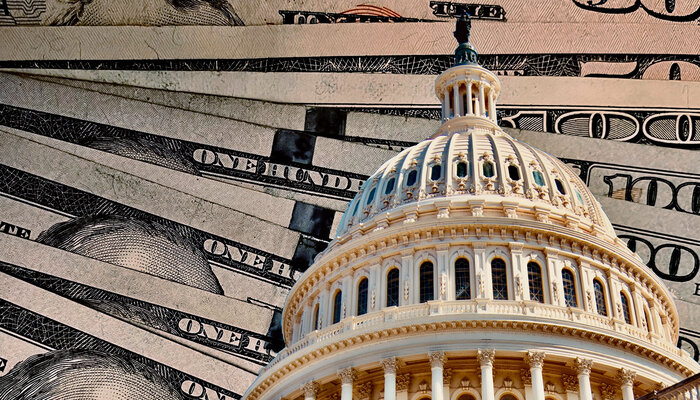The average amount raised by those running federal office has increased dramatically in recent decades, resulting in candidates and elected officials needing to spend more time raising money during their campaigns just to keep up. But money also shapes members’ access to power and influential committees once they are in Congress, meaning that pressure on elected officials to raise funds continues well past Election Day. A new Brennan Center analysis of congressional fundraising shows just how true this is.
In fact, financial demands require senators and representatives to continually fundraise, including by raising money directly for their political party, for super PACs, and for leadership PACs that politicians use to build political connections.
Achieving power as a member of Congress often depends on fundraising for more than just one’s own campaign. Members of both parties have long been expected to raise a certain amount of money for their party, known as “dues.” If they want committee chairs or party leadership positions, they are often expected to raise even more. As early as the 1990s, House Speaker Newt Gingrich threatened to remove committee chairs who did not help other Republicans financially. An internal Democratic Party document showed that members are now expected to raise between at least $100,000 and $30 million for the party annually.
Members of Congress also often donate directly to other candidates in their party, which betters their chances for leadership positions by cultivating support among colleagues. One vehicle for doing so is so-called leadership PACs, political action committees controlled by a candidate or elected official. Unlike fundraising for the party, fundraising through leadership PACs gives members more agency to direct contributions to specific political allies.
While leadership PACs are sometimes used to pay for members’ transportation, lodging, and meals, they are still the primary way in which members give to their party and to colleagues. Of the 535 members of Congress, only 120 spent less than half of their leadership PAC on other candidates, political parties, or political groups, the advocacy group Issue One found.
According to our analysis of data from Stanford’s DIME data collection and from Open Secret’s data on leadership PACs, in the three most recent House classes, four of the five top total fundraisers and the five representatives with largest leadership PACs all have held either party leadership positions or committee chairs. There is a strong perception of a relationship between the size of leadership PACs and leadership positions. Rep. Barney Frank (D-MA), a prominent former member of Congress and longtime chair of the House Financial Services Committee, explained that leadership PACs are “a way for any member to get larger contributions and then in turn become a dispenser and buy influence. It shouldn’t be called a ‘Leadership PAC.’ It should be called ‘I wanna buy my way into the Leadership PAC.’”
Members might also use leadership PACs and party dues to secure committee assignments. Certain committees are especially desirable due to their prestige and jurisdiction. Sitting on “A-list” committees allows members to move forward agenda items they might otherwise not have a chance to handle.
The House Ways and Means Committee is traditionally one of the most desirable assignments, in part because more bills are referred to it than to any other committee. According to our analysis, the median leadership PAC size for Ways and Means Committee members between 2010 and 2018 was more than twice the size of those not on the committee. This pattern may be driven by members with larger leadership PACs being assigned to the committee, membership on A-list committees increasing fundraising potential, or both.
Party dues also influence committee assignments. Former Rep. Ken Buck (R-CO) said that he was required to give $450,000 to the National Republican Campaign Committee to maintain his position on the desirable House Rules Committee, which controls the introduction and consideration of legislation.
Politicians are also now expected to fundraise for super PACs (by attending events or endorsing PACs), including helping House and Senate party caucus PACs that benefit the party as a whole rather than just their individual candidacy.
The need to raise money limits the time and energy that legislators spend legislating. A recent study found that members now spend a third of their time working to pass laws and a fifth of their time on “political and campaign activities.” Former Rep. Zach Wamp (R-TN) said, “I don’t know of a single member that is leaving [Congress] that does not include the pressures of raising money to advance and maintain your committee position as one of the contributing factors. They all talk about it. It wears you out. . . . That’s the inconvenient truth of Congress today: You’re a money machine.” Moreover, the constant courting of donors amplifies the power of moneyed interests. It also risks reproducing structural disadvantages that candidates from marginalized groups face when raising funds for their own campaigns.
There are ways to curb the power of money in politics. Policy solutions such as small donor public financing, in which small donations are matched by public funds, could rebalance the sources of funds for Members of Congress, and in so doing they could reshape congressional dynamics. Party steering committees, which make decisions on committee and leadership assignments, should also rethink their increasing focus on fundraising in making these decisions. The need for reform is clear. A system in which so many of the paths to leadership are tied to fundraising does a disservice to elected officials and to the American people.






